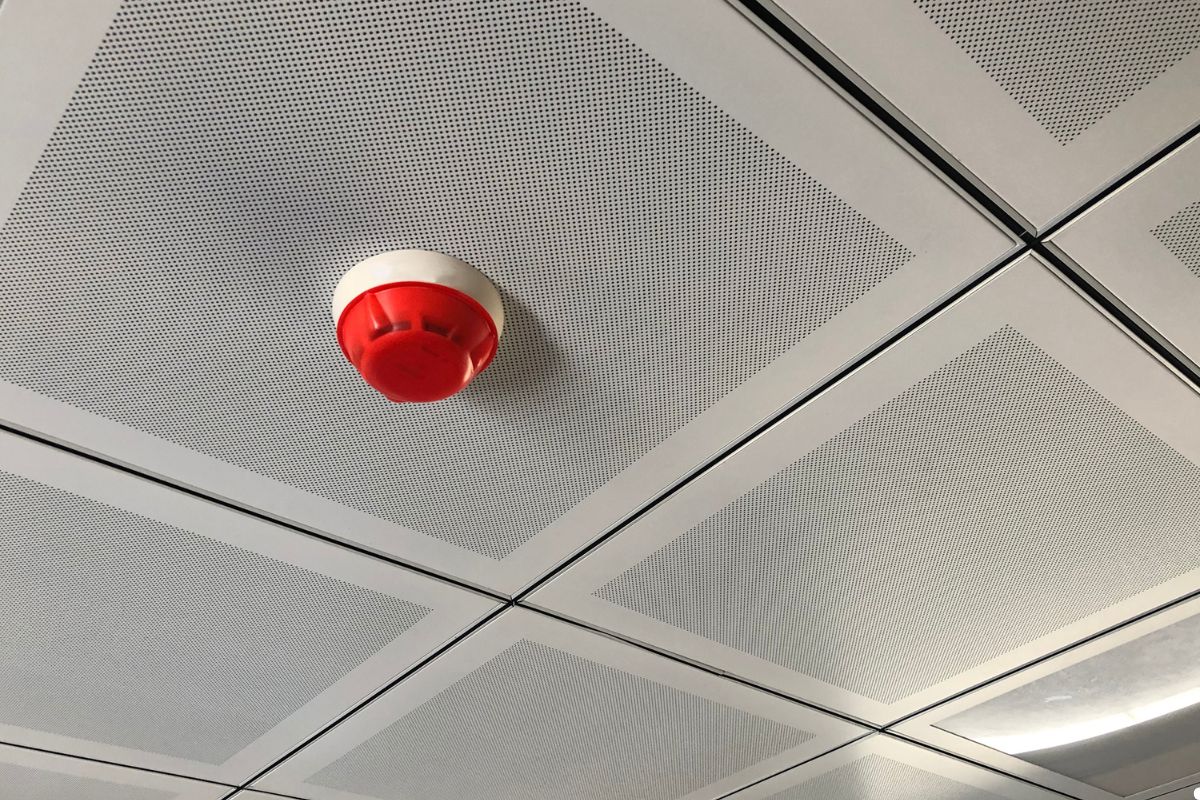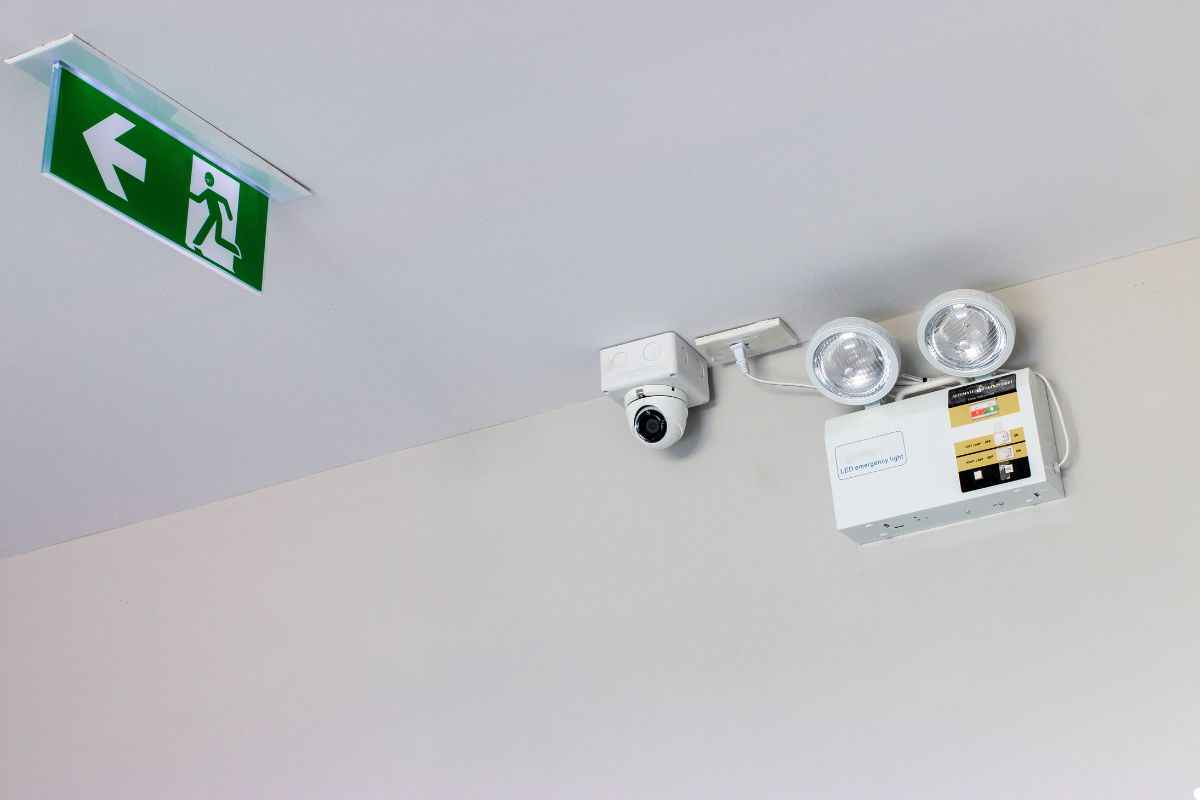
Motion sensors are essential components of modern security systems, smart homes, and automation technologies, detecting movement and triggering a response. They come in various forms, each using different technologies to sense motion. From safeguarding your home to automating lighting, understanding the different types of motion sensors and their applications is crucial for making informed decisions about your security and automation needs. Call us today to find the perfect motion sensor solution for your needs!
What are Motion Sensors & How Do They Work?
Motion sensors are electronic devices that detect movement in a designated area. They convert physical motion into an electrical signal, which can then activate an alarm, trigger lights, or perform other automated tasks.
Why are Motion Sensors Important?
Motion sensors play a vital role in enhancing security by detecting unauthorized entry or unusual activity. They also contribute to energy efficiency by automating lighting and climate control systems based on occupancy. In smart homes, they can trigger various scenes and automations, making life more convenient. Advanced detectors can differentiate between humans and pets, reducing false alarms in security systems.
Basic Principles of Motion Detection
Motion sensors work on different principles, including detecting changes in infrared radiation, radio waves, sound waves, or vibrations. The specific technology used determines the sensor’s range, sensitivity, and suitability for different environments.

Passive Infrared (PIR) Sensors: Detecting Heat Signatures
PIR sensors are among the most common type of motion sensors used in residential and commercial settings. They are relatively inexpensive, reliable, and energy-efficient.
How PIR Sensors Function
PIR sensors detect changes in infrared radiation, or heat, emitted by objects in their field of view. When a warm object, such as a person, moves into the sensor’s range, it detects the change in infrared energy and triggers an alarm or other response. They don’t actually “see” an image, but rather sense changes in heat levels.
Advantages & Disadvantages of PIR Sensors
Advantages:
- Low power consumption
- Relatively inexpensive
- Simple to install
Disadvantages:
- Can be susceptible to false alarms from sudden temperature changes (e.g., sunlight streaming through a window, heating vents)
- Limited range compared to some other sensor types
Common Applications of PIR Sensors
PIR sensors are widely used in:
- Security systems
- Outdoor lighting
- Smart home automation
- Occupancy sensors for lighting control in offices
Microwave Motion Sensors: Using Radio Waves for Detection
Microwave motion sensors emit microwave radio waves and detect changes in the frequency of those waves when they bounce off moving objects. This technology is more sensitive than PIR sensors and can cover a larger area.
How Microwave Sensors Function
Microwave sensors emit a continuous stream of low-power microwave radiation. When an object moves within the sensor’s range, it causes a change in the frequency of the reflected waves (Doppler effect). The sensor detects this change and triggers an alarm.
Advantages & Disadvantages of Microwave Sensors
Advantages:
- Longer range than PIR sensors
- More sensitive to movement
- Can detect movement through walls and other obstructions (to a limited extent)
Disadvantages:
- Higher power consumption than PIR sensors
- More expensive
- Potential for false alarms due to environmental factors
Common Applications of Microwave Sensors
Microwave sensors are often used in:
- Automatic doors in commercial buildings
- Industrial automation
- Perimeter security systems
Ultrasonic Motion Sensors: Detecting Sound Waves
Ultrasonic motion sensors emit ultrasonic sound waves (frequencies above human hearing) and detect changes in the frequency or amplitude of the reflected waves.
How Ultrasonic Sensors Function
These sensors emit high-frequency sound waves and measure the time it takes for the waves to bounce back. Changes in the time delay indicate movement.
Advantages & Disadvantages of Ultrasonic Sensors
Advantages:
- Unaffected by temperature changes
- Can detect movement of stationary objects (e.g., a slowly moving person)
Disadvantages:
- Limited range compared to microwave sensors
- Can be affected by air currents and other environmental factors
- May be disturbing to some animals
Common Applications of Ultrasonic Sensors
Ultrasonic sensors are often used in:
- Robotics
- Parking sensors
- Liquid level sensing
Dual Technology Motion Sensors: Combining Methods for Accuracy
Dual technology motion sensors combine two or more sensing technologies (typically PIR and microwave) to reduce false alarms and improve accuracy.
How Dual Technology Sensors Work
These sensors require both technologies to trigger an alarm. For example, a PIR sensor might detect a heat signature, and a microwave sensor might detect movement. Only when both sensors are activated will the alarm sound.
Advantages & Disadvantages of Dual Technology Sensors
Advantages:
- Significantly reduced false alarm rate
- High accuracy
Disadvantages:
- More expensive than single-technology sensors
- May require more complex installation
Common Applications of Dual Technology Sensors
Dual technology sensors are commonly used in:
- High-security environments
- Outdoor applications where false alarms are a concern
- Homes with pets
Vibration Motion Sensors: Sensing Movement Through Physical Contact
Vibration motion sensors detect movement through physical contact.
How Vibration Sensors Function
These sensors use Piezoelectric components, Spring-Mass system for sensing Physical movement and convert into electrical signals.
Advantages & Disadvantages of Vibration Sensors
Advantages:
- Reduce the False alarm
- Highly accurate.
- Longer lifespan as compared to other sensors.
Disadvantages:
- Difficult to Install.
- Expensive
Common Applications of Vibration Sensors
Vibration sensors are often used in:
- Anti-theft
- Military application
- Industrial Use
Selecting the Perfect Motion Sensor for Your Needs
Choosing the right motion sensor depends on several factors, including the environment, the desired level of security, and your budget.
Factors to Consider When Choosing a Motion Sensor
- Environment: Indoor vs. outdoor, temperature fluctuations, presence of pets
- Range and Coverage Area: How large of an area needs to be monitored?
- Sensitivity: How sensitive should the sensor be to movement?
- Power Source: Battery-powered vs. hardwired
- Cost: The price of the sensor and installation
Matching Sensor Type to Specific Applications
- Security Systems: Dual technology sensors are often the best choice for home security systems to minimize false alarms.
- Outdoor Lighting: PIR sensors are a good option for activating outdoor lights.
- Smart Homes: A mix of sensor types can be used to automate various tasks.
Installation Tips for Optimal Performance
- Follow the manufacturer’s instructions carefully.
- Position the sensor in a location where it has a clear view of the area to be monitored.
- Avoid placing sensors near heat sources or windows.
- Test the sensor after installation to ensure it is working properly.

Frequently Asked Questions About Motion Sensors
What is the range of a typical motion sensor?
The range varies depending on the type of sensor. PIR sensors typically have a range of 15-30 feet, while microwave sensors can have a range of up to 100 feet.
Can motion sensors see through walls?
Microwave sensors can detect movement through walls to some extent, but other types of sensors cannot.
How do I prevent false alarms with my motion sensor?
Use dual technology sensors, adjust the sensitivity settings, and avoid placing sensors near heat sources or windows. Proper installation is key. Also, consider the placement of security cameras along with your motion sensors.
Are motion sensors pet-friendly?
Some motion sensors are designed to be pet-friendly by ignoring smaller animals. These sensors typically use advanced algorithms to differentiate between humans and pets. Advanced detectors use algorithms to differentiate between humans and pets.
Where is the best place to install a motion sensor?
The best place to install a motion sensor depends on the application. For security systems, common entry points, hallways, and areas with valuables are good choices.
The Future of Motion Sensor Technology
Motion sensor technology is constantly evolving, with new advancements emerging regularly.
Emerging Trends in Motion Sensing
- Increased integration with smart home devices: Motion sensors are becoming more tightly integrated with smart home ecosystems, allowing for seamless automation and control.
- Improved accuracy and false alarm reduction: New algorithms and sensor technologies are helping to reduce false alarms and improve the accuracy of motion detection.
- Miniaturization and lower power consumption: Motion sensors are becoming smaller and more energy-efficient, making them suitable for a wider range of applications.
The Role of AI and Machine Learning in Motion Detection
AI and machine learning are playing an increasingly important role in motion detection. AI-powered motion sensors can learn to differentiate between different types of movement, reducing false alarms and providing more accurate and reliable security. They can also be used to analyze motion patterns and identify potential threats. Enhance your security with AI-powered motion detection for accurate threat identification. Contact us today to upgrade your system!
Conclusion
Motion sensors are versatile and essential components in modern security and automation systems. By understanding the different types of motion sensors, their advantages, and disadvantages, you can make informed decisions about how to best protect your home or business. Contact us today to learn more about our comprehensive range of motion sensor solutions and how we can help you enhance your security and automation systems. Call us for expert guidance and assistance!
